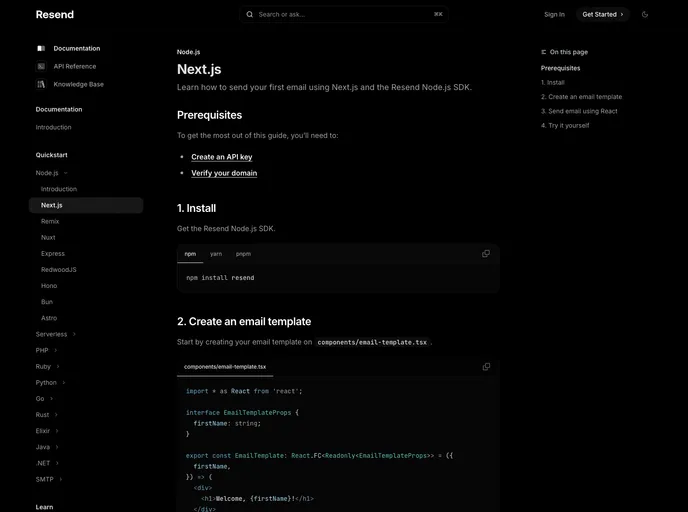Resend Nextjs App Router Example

This example shows how to use Resend with Next.js (App Router)
Overview
The Resend Next.js App Router Example is an exciting implementation that illustrates the seamless integration of Resend with Next.js, particularly focusing on the App Router feature. This example serves as a handy guide for developers who are looking to leverage the capabilities of Resend in their Next.js applications, making it easier to set up and manage routing functionalities.
This example not only demonstrates the fundamental mechanics of the integration but also provides insights into best practices for optimizing performance and improving user experience. With Resend, developers can enhance their applications by efficiently managing data flow and asynchronous operations.
Features
- Easy Integration: The example utilizes simple setup steps to integrate Resend with Next.js, ensuring a smooth transition for developers.
- App Router Support: Demonstrates how to implement routing effectively using Next.js’s App Router, streamlining navigation within applications.
- Real-Time Data Handling: Showcases the capability of Resend to manage real-time data efficiently, which is crucial for dynamic web applications.
- User-Friendly Documentation: Comprehensive explanations within the example make it accessible for both new and experienced developers.
- Performance Optimization: Tips included on how to maximize application performance when using Resend with Next.js.
- Asynchronous Operations: Highlights how to utilize asynchronous requests effectively, allowing for enhanced application responsiveness.

- Next.js
Next.js is a React-based web framework that enables server-side rendering, static site generation, and other powerful features for building modern web applications.
- React
React is a widely used JavaScript library for building user interfaces and single-page applications. It follows a component-based architecture and uses a virtual DOM to efficiently update and render UI components
- Typescript
TypeScript is a superset of JavaScript, providing optional static typing, classes, interfaces, and other features that help developers write more maintainable and scalable code. TypeScript's static typing system can catch errors at compile-time, making it easier to build and maintain large applications.